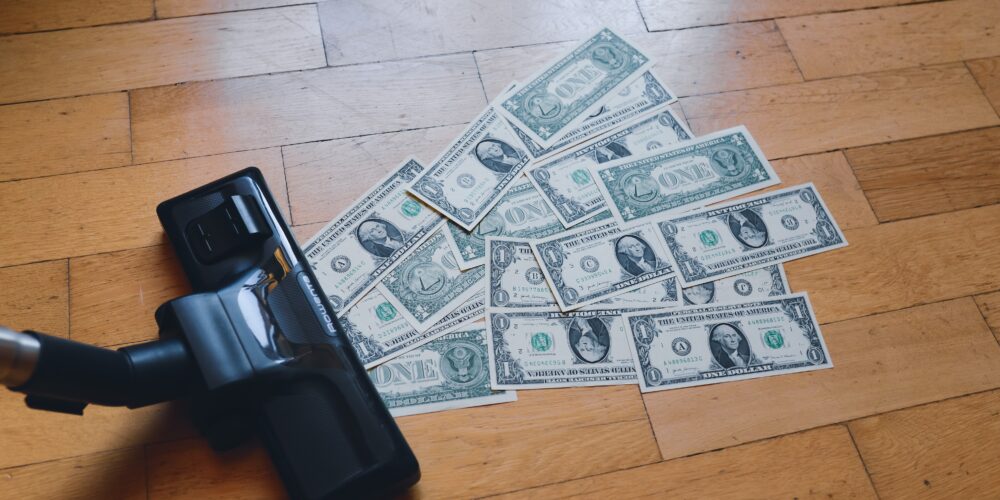✌️ Welcome to the latest issue of The Informationist, the newsletter that makes you smarter in just a few minutes each week.
🙌 The Informationist takes one current event or complicated concept and simplifies it for you in bullet points and easy to understand text.
🧠 Sound smart? Feed your brain with weekly issues sent directly to your inbox here
Today’s Bullets:
- What’s the CPI?
- COGI vs COLI
- The difference between ‘nominal rates’ and ‘real rates’
- What you can do about it…(yep, Bitcoin)
Inspirational Tweet:
Commodity price increases over the last year…
Nickel: +120%
Nat Gas: +114%
Heating Oil: +114%
WTI Crude: +95%
Brent Crude +90%
Gasoline: +79%
Wheat: +78%
Coffee: +75%
Cotton: +73%
Aluminum: +61%
Corn: +38%
Sugar: +30%
Soybeans: +21%
Copper: +18%
Gold: +13%
US CPI: +7.9%— Charlie Bilello (@charliebilello) March 26, 2022
Charlie points out that while the cost of all these goods are rapidly rising, the CPI seems to be rising just a fraction of that. How can that possibly be?
No worries, we will answer this and more below…
🥩 What’s the CPI?
First, let’s get a solid understanding of what the CPI is and what it is not.
The Consumer Price Index, also known as the CPI, is the benchmark measure for U.S. inflation and is calculated by the Bureau of Labor Statistics (BLS). The CPI is also used to calculate US GDP (gross domestic product).
There’s been plenty of controversy recently about the accuracy of the CPI and whether inflation has been (severely) understated, as inferred by Charlie Bilello’s post above. I mean, how can all these goods be so inflated yet the CPI rise only a fraction of that?
Good question. Let’s see if we can tackle this succinctly here.
First, the CPI is a basket of goods and services that is priced from period to period (month to month, quarter to quarter, year to year, etc.). As these goods and services rise and fall in price, the average price of the basket rises and falls as well. The percentage at which the basket rises and falls is the CPI, and this can be positive or negative, depending on whether prices are rising or falling.
Simple, right?
Problem is, the CPI is not consistent in a number of ways. And this is what causes all the controversy and confusion.
Let’s dig into the inconsistencies, shall we?
🧺 COGI vs COLI
The CPI was traditionally measured by comparing the price of a fixed basket of goods and services between two different periods. The measure was therefore called cost of goods index (COGI).
However, in recent years, Congress and the BLS decided that the CPI should be revised in order to reflect changes in the cost to maintain a constant standard of living. And so, the CPI evolved into what is known as a cost of living index (COLI).
As a result, the weightings of the goods and even the goods themselves can now change from period to period, according to consumers’ responses to price changes.
If people are no longer buying beef because it is too expensive and instead buying pork, then the basket weighting of beef goes down and an ‘equivalent’ measure of pork is substituted. Problem solved.
Or not.
Because the BLS can pick and choose what goes in the basket and what comes out, as well as the weightings of everything, this makes the measure ripe for manipulation.
Charlie showed us examples of this in Exhibit A (his Tweet) above.
I sometimes get the response: OK, so inflation is understated recently. Other than the Fed reporting wrong numbers, why does this matter to the average person?
Let’s answer that next.
📈 The difference between ‘nominal rates’ and ‘real rates’
First and foremost, inflation tells us how hot or cold the economy is running. If we have high inflation, then there is probably a lot of borrowing going on, a lot of leverage in the system, and tons of spending by both companies and consumers.
Most importantly, asset prices go up. Think stocks, real estate, art and collectibles, etc.
So what can the average person do about this?
First, if you have savings, you could invest money in an interest bearing savings account. The returns you get on the interest will offset the purchasing power you are losing to inflation. This of course would protect you…or so you would think.
This is where nominal rates vs real rates come into play.
A nominal rate is the interest that the investment pays you. In this instance, it is the savings account return. For example, let’s say you are offered a savings account with an interest rate of 2.9%.
Put $100 in that account and 1 year later you have $102.90.
Problem is, if inflation is running at 7.9% year over year, then your dollars are worth that much less than they were in purchasing power. You would actually need $107.90 next year to compensate for the rise in prices of goods.
In this case, you actually lost 5% in real terms.
Nominal Rate – Inflation = Real Rate
2.9% – 7.9% = -5%
Ouch.
This is why so many investors call the US Dollar a melting ice cube. If you keep cash lying around and don’t invest it, then it is literally melting away. The only alternative is to invest in appreciating assets.
Problem is, most people don’t have enough discretionary income (money left over after paying for their cost of living) to just start buying stocks or art or extra real estate. Especially because these investments come with risk and volatility that could hurt the investor when they may need that money for an extraneous expense, such as a medical bill or emergency.
And worse for those who cannot invest in assets, most wages are not rising fast enough to keep up with the stated inflation rate, no less the un-manipulated actual inflation rate.
And herein is why the rich are getting richer and the poor are getting poorer.
🌽 What you can do about it…(yep, Bitcoin)
If you’ve been following me on Twitter, you know that one of the things I talk about quite a bit is Bitcoin. Specifically, the attractive qualities of BTC as not just an investment, but as a hedge against inflation and insurance against hyperinflation.
It doesn’t matter when you are reading this, as long as the world is still operating primarily with fiat (government issued and ‘backed’) money, Bitcoin remains a hedge vs inflation and insurance against hyperinflation. I wrote a simple but thorough thread about that here:
As a risk trader, I’m always concerned about 'Tail Risks'.
And #Bitcoin hedges against the biggest tail risk we’ve ever faced in the history of the modern financial world:
An all out collapse of fiat currencies.
How? Let’s break it down nice and easy here 👇🧵
— James Lavish (@jameslavish) February 15, 2022
To identify the inflation hedge attributes of Bitcoin, it’s simple really. Because Bitcoin is governed by a mathematical formula (not a Board of Directors, CEO, or Founder), the supply of BTC (Bitcoin coins) is absolutely limited to 21 million total.
Furthermore, with a truly decentralized network (the computers that collectively govern the Bitcoin algorithm, mining, and transaction settlements), settled transactions and total number of Bitcoin to be minted will never change. Bitcoin is therefore immutable.
In other words, Bitcoin is safe.
Whether or not the price of Bitcoin (BTC) is volatile in the short term does not matter as much as the fact that we know the value of the US Dollar continues to decline. And in the long term and in total, as the dollar declines, BTC appreciates. It is therefore a hedge against long term inflation of not just the US Dollar, but any government issued fiat currency.
The best part? Each single Bitcoin is made up of 100 million pennies (called satoshis or sats), and one can therefore buy as much or as little they can or want to in a single transaction.
$5 or $500 million. You name it, Bitcoin can handle it.
That’s it. I hope you feel a little bit smarter knowing about the CPI and inflation and understand how Bitcoin can help you fight the negative forces of the melting ice cube in your pocket.
As always, feel free to respond to this newsletter with questions or future topics of interest!
✌️Talk soon,
James











For years, I’ve been telling people that the best way to calculate THEIR inflation rate is to keep a detailed budget and to look at 3 data points: 1) monthly food (groceries and restaurants) 2) energy (gasoline) and 3) housing (rent/mortgage, utilities, and maintenance). By looking at these 3 expenditures, anyone can make a pretty decent inflation figure. If they’ve been keeping the budget for years, even better… compare the same month in the current year to the previous year.
Also, and this is just my opinion, PPI (Producer Price Index) is a better measure of inflation than CPI.
This is such a great and simple idea. So good! I think we tend to rely on these metrics handed to us by the central banks i.e. CPI when the reality is that inflation is very personal and so being able to manually calculate your own personal inflation is so important. Thanks for the little simplified exercise, Cory!
It’s only simple if you’ve been keeping a detailed budget for a few years.
I just used this little system to compare my personal inflation rate. I compared my expenditures in March 2022 to the previous 3 Marchs… Expenditures in 2020 and 2021 were very low (especially on restaurants), resulting in an average personal inflation rate of almost 30%!!!! It’s not a perfect measurement, but neither is CPI.